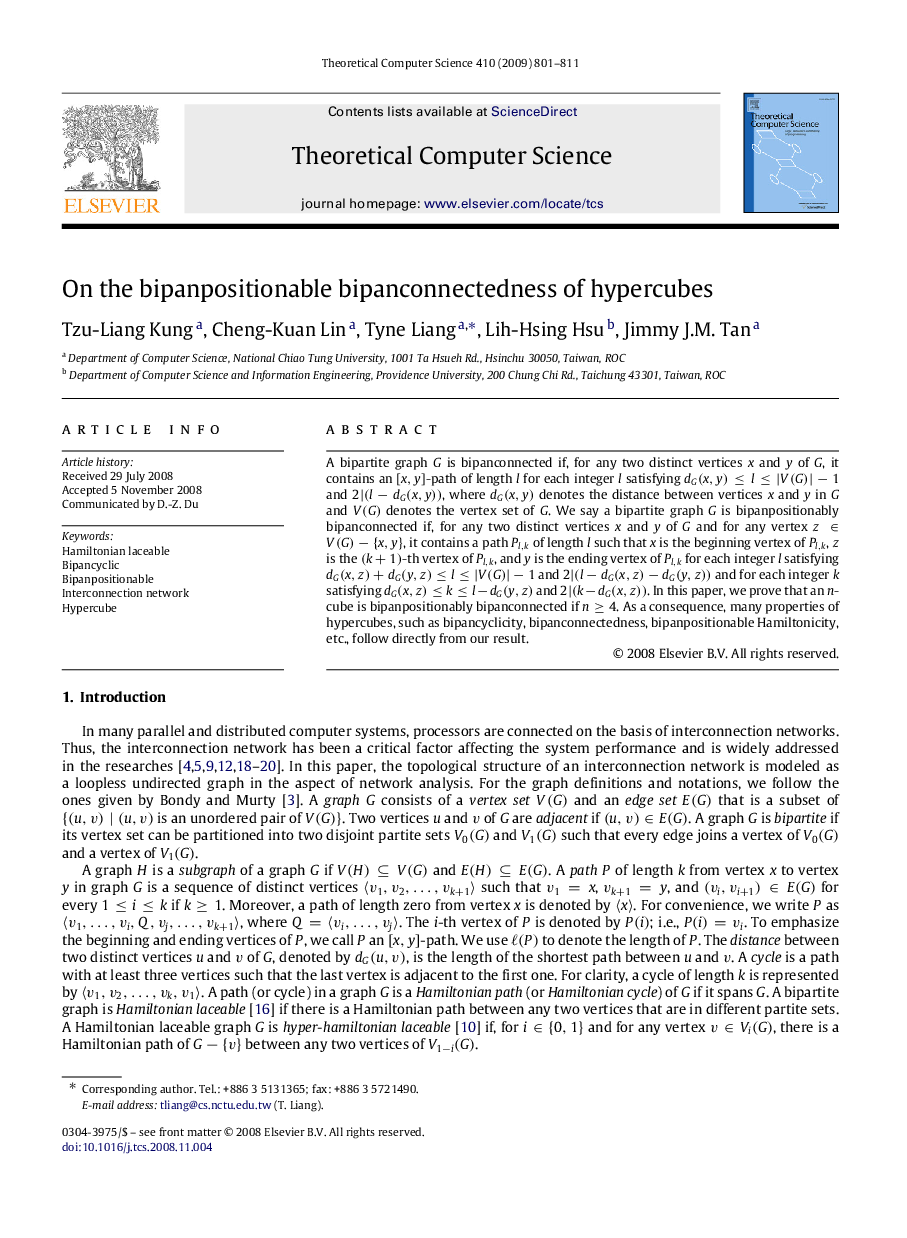| Article ID | Journal | Published Year | Pages | File Type |
|---|---|---|---|---|
| 436204 | Theoretical Computer Science | 2009 | 11 Pages |
A bipartite graph G is bipanconnected if, for any two distinct vertices x and y of G, it contains an [x,y]-path of length l for each integer l satisfying dG(x,y)≤l≤|V(G)|−1 and 2|(l−dG(x,y)), where dG(x,y) denotes the distance between vertices x and y in G and V(G) denotes the vertex set of G. We say a bipartite graph G is bipanpositionably bipanconnected if, for any two distinct vertices x and y of G and for any vertex z∈V(G)−{x,y}, it contains a path Pl,k of length l such that x is the beginning vertex of Pl,k, z is the (k+1)-th vertex of Pl,k, and y is the ending vertex of Pl,k for each integer l satisfying dG(x,z)+dG(y,z)≤l≤|V(G)|−1 and 2|(l−dG(x,z)−dG(y,z)) and for each integer k satisfying dG(x,z)≤k≤l−dG(y,z) and 2|(k−dG(x,z)). In this paper, we prove that an n-cube is bipanpositionably bipanconnected if n≥4. As a consequence, many properties of hypercubes, such as bipancyclicity, bipanconnectedness, bipanpositionable Hamiltonicity, etc., follow directly from our result.
